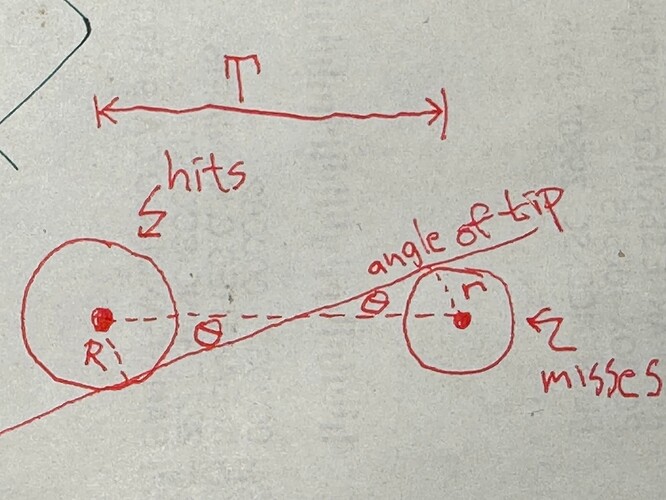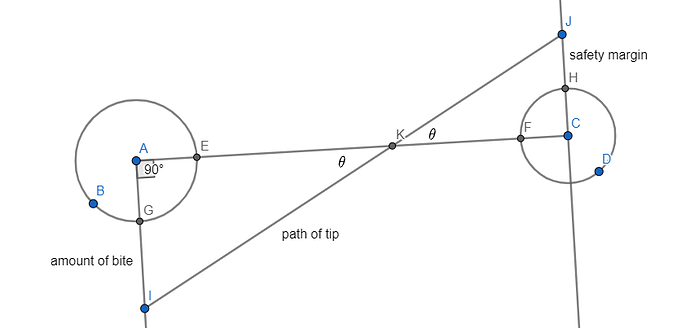I was imagining a trapped pick that was about to escape where the strings have a nearest spacing of T. (Let’s make all of the units be in millimeters, so T=10.5mm or so.) If the pick hits a distance R away from its tip on the string that it is trapped by (say R=3mm) and clears the next string by r as a safety margin (say r=3mm), what is the angle? I think it is 35 degrees.
It seems that the answer (hopefully I did it right!) is a simple formula,
angle = arcsin((R + r) / T).
So notice that the formula doesn’t care what’s R and what’s r, it just adds them up!
So, I can just make a little table of R + r and the angle, where the first column is the total mm of radius, and the second column is the resulting angle in degrees. I suspect that normal people would have a lot of trouble going much below 6mm.
0: 0
1: 6
2: 11
3: 17
4: 23
5: 29
6: 35
7: 42
8: 50
9: 59
10: 73
So why is this interesting? It suggests that if one hits with a lot of pick and has a big safety margin then the angle has to be steep. But it also explains why reciprocating while trapped on a single string might make sense, as there are two convenient nearby exit options (as has been pointed out by @joebegly, @Riffdiculous and surely some others).
Here is a picture so other people can work out the geometry and correct my mistake if I made one, so I can fix the numbers here to be correct. (Rather than “angle of tip,” I wish that I wrote, “path of tip.”)


